What’s Your Type? Learning to Print With Rare Book School
The printing press is considered one of the most important inventions that have changed the world, because it democratized information. …
The printing press is considered one of the most important inventions that have changed the world, because it democratized information. Developed by Johannes Gutenberg in 1440, it was key in making available to ordinary people ideas about religion, culture, science and politics.
Rare Book School at the University of Virginia is dedicated to studying the history of the book as a cultural artifact and all that goes into making books (even digital texts), including the printing process. The school offers a range of courses in Charlottesville during the summer, as well as in several other major cities, to spread the “knowledge and expertise essential to the responsible stewardship of the historical archive in all its richness and pluriformity,” as the mission statement says.
Of Rare Book School’s 24 intensive, hands-on seminars taught on Grounds a couple of weeks ago, one covered “The History of 19th- & 20th-Century Typography & Printing.” The students had a chance to try for themselves the laborious process of setting each piece of metal type to make and print a paragraph about typesetting.
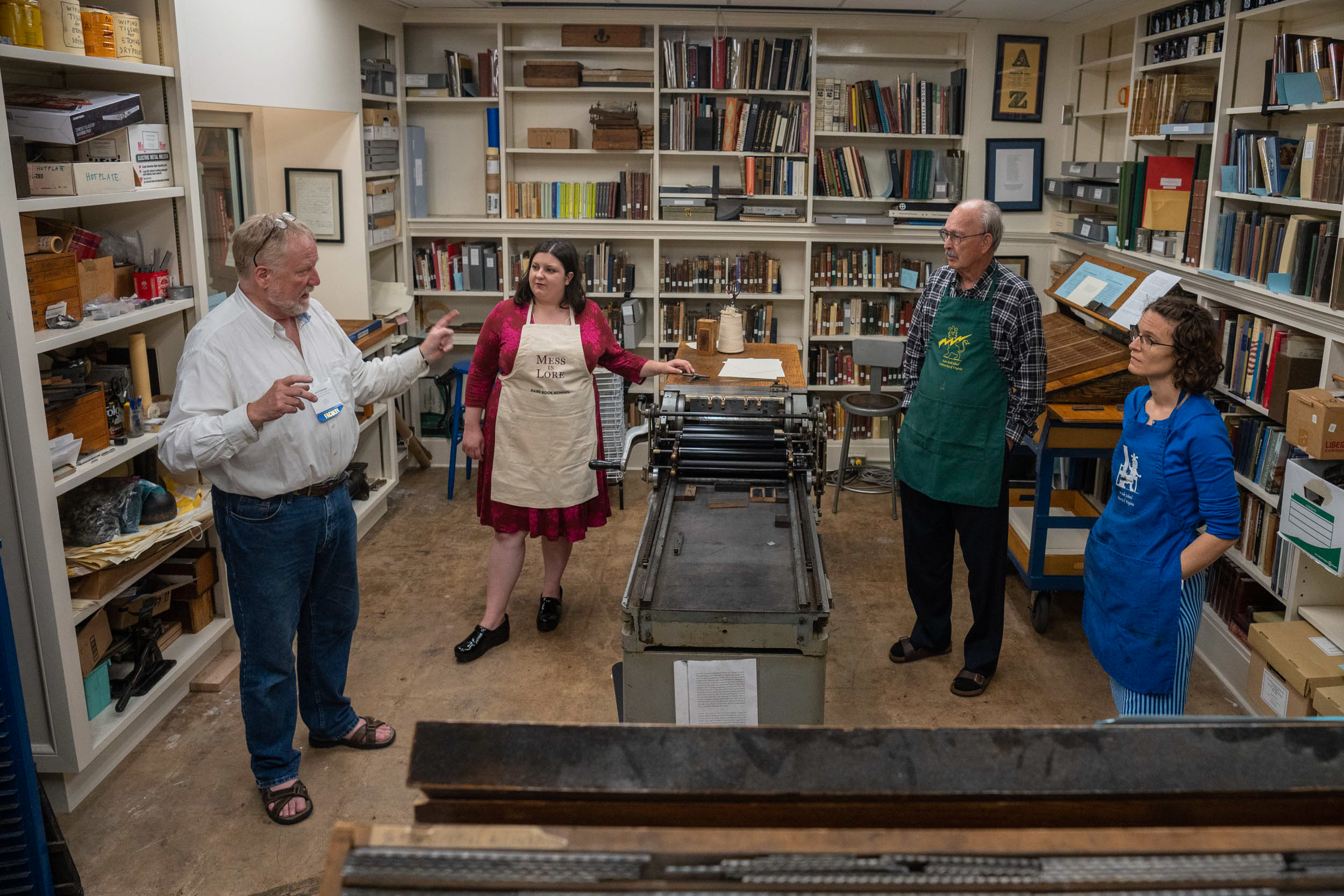 Instructor John Kristensen, far left, talks about printing with students Amanda Rogus, Bill Bryson and Lydia Fash.
Instructor John Kristensen, far left, talks about printing with students Amanda Rogus, Bill Bryson and Lydia Fash.
John Kristensen co-taught the course with Katherine McCanless Ruffin, who directs the book studies program at Wellesley College. The school’s teachers, as well as the students, come from all over; Kristensen is proprietor of Firefly Press in Boston. A short documentary about the press, made by WGBH Television, is by far the most-often-viewed letterpress-related video on the internet.
Other courses cover such topics as bookbinding, book design, developing collections, bibliographical descriptions, manuscripts and forgeries, archival resources, and born-digital materials.
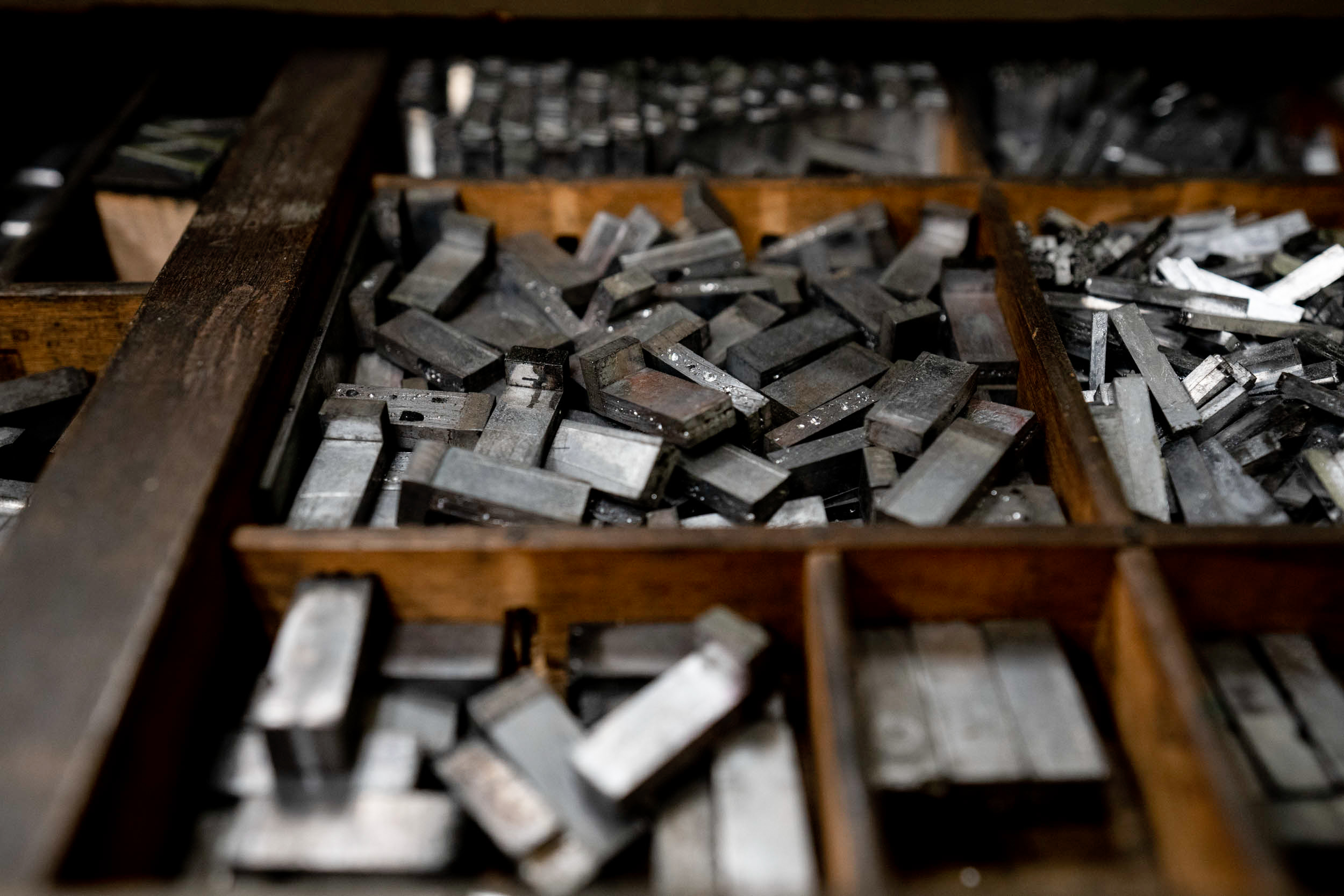 Rare Book School has a wide variety of typefaces for students to use on its Vandercook proof press.
Rare Book School has a wide variety of typefaces for students to use on its Vandercook proof press.
Each piece of metal type – called a “sort” – has a letter or punctuation mark that must be put into a composing stick, a tray-like device for arranging words and lines, in order to print them.
Movable type was first invented in China and Korea centuries earlier than Gutenberg’s in the 15thcentury. Letterpress printing hardly changed technologically for hundreds of years even as the number of books grew exponentially.
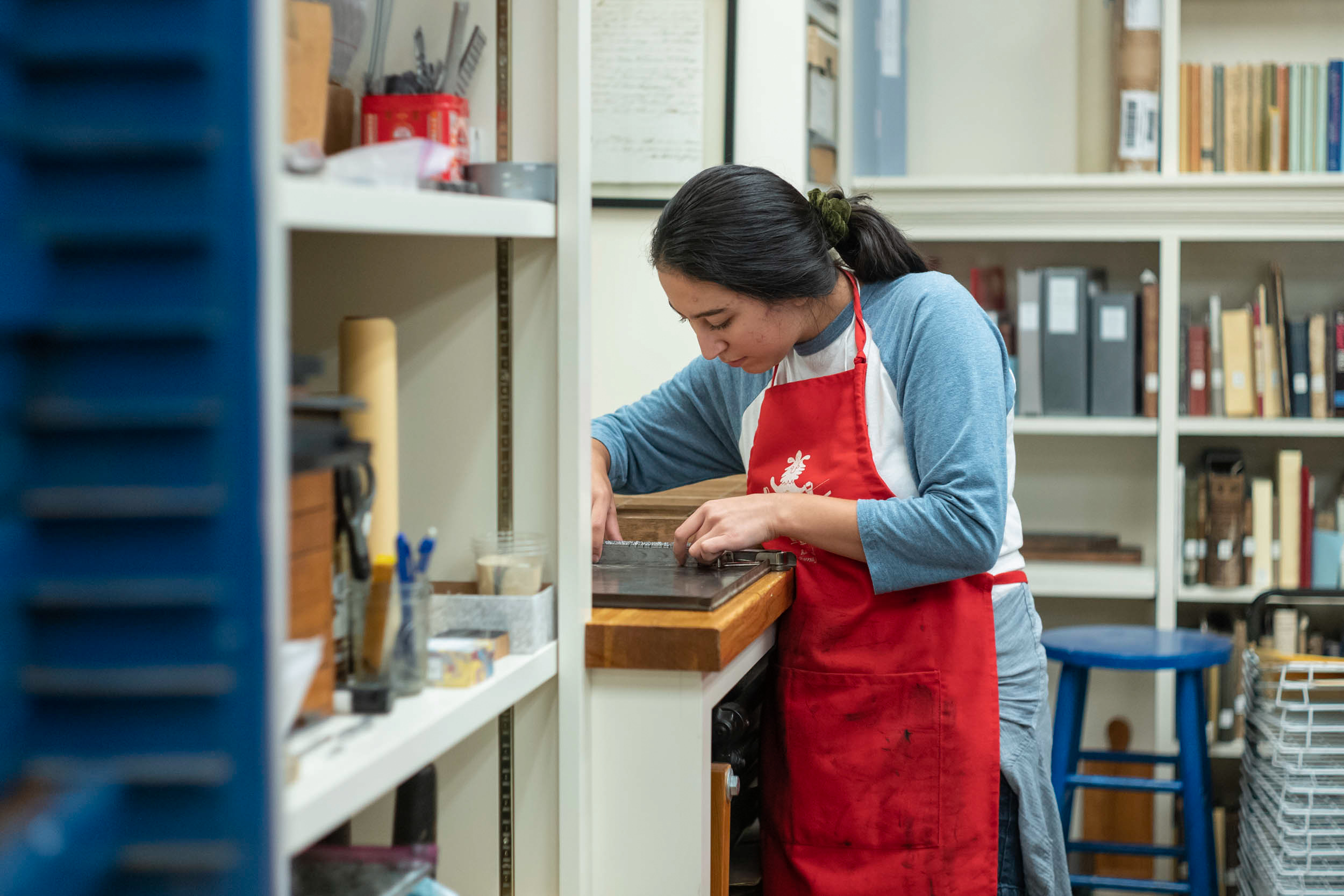 UVA student Tamara Sherman has a Presswork Fellowship.
UVA student Tamara Sherman has a Presswork Fellowship.
Rare Book School has a number of different fellowship programs. The Presswork Fellowship, supported by the Alumni Association’s Jefferson Trust, offers UVA students the opportunity to learn about the history, craft and technology of printing and how to use historical presses, to serve as a teaching assistant and to help plan public projects.
The school’s newest program, the Andrew W. Mellon Fellowship for Diversity, Inclusion & Cultural Heritage, supported by a $1.5 million grant from the Mellon Foundation, will take applications this fall. The six-year grant “aims to advance multicultural collections through innovative and inclusive curatorial practice and leadership.” The program will enable three overlapping cohorts of 15 fellows each from diverse racial or ethnic communities, or who work with multicultural collections, to attend Rare Book School courses and related conferences and participate in working groups and mentorships.
The Mellon Foundation also supports the school’s Society of Fellows in Critical Bibliography, which includes junior and senior fellows. The former group comprises early career scholars and researchers from related fields.
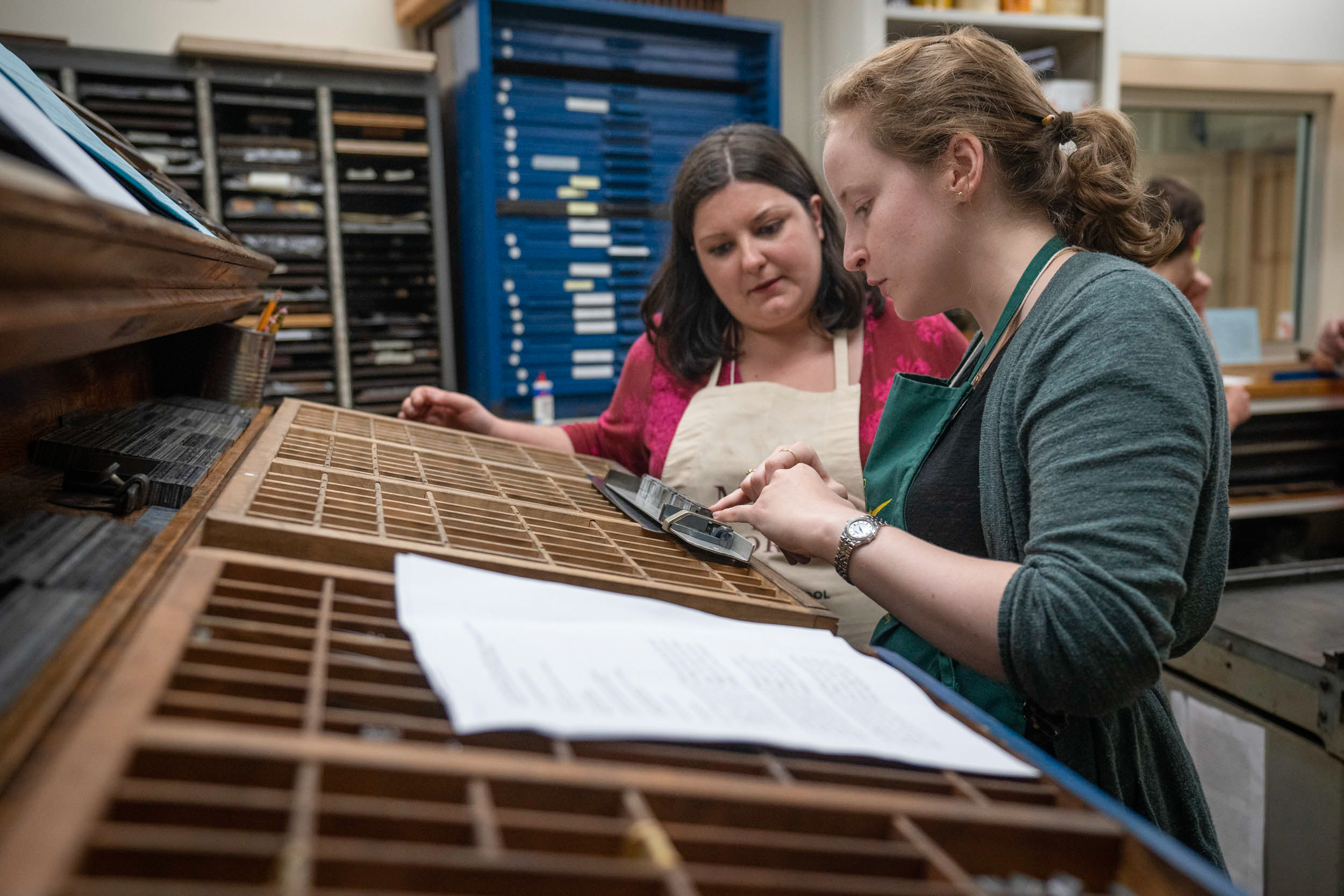 Course assistant Suzanne Glémot shows Amanda Rogus how the pieces of type fit together.
Course assistant Suzanne Glémot shows Amanda Rogus how the pieces of type fit together.
The sorts are placed in the composing stick in the order in which the words will be read. Each piece of type is backwards, so when everything is printed, the words come out correctly.
Glémot, who has a master’s degree in library and information science, is a book artist, making hand-printed books and broadsides – a kind of poster that announces events, proclamations or other commentary.
Rogus is studying for a master’s degree in Mary Baldwin University’s Shakespeare and Performance program and also works for the American Shakespeare Center.
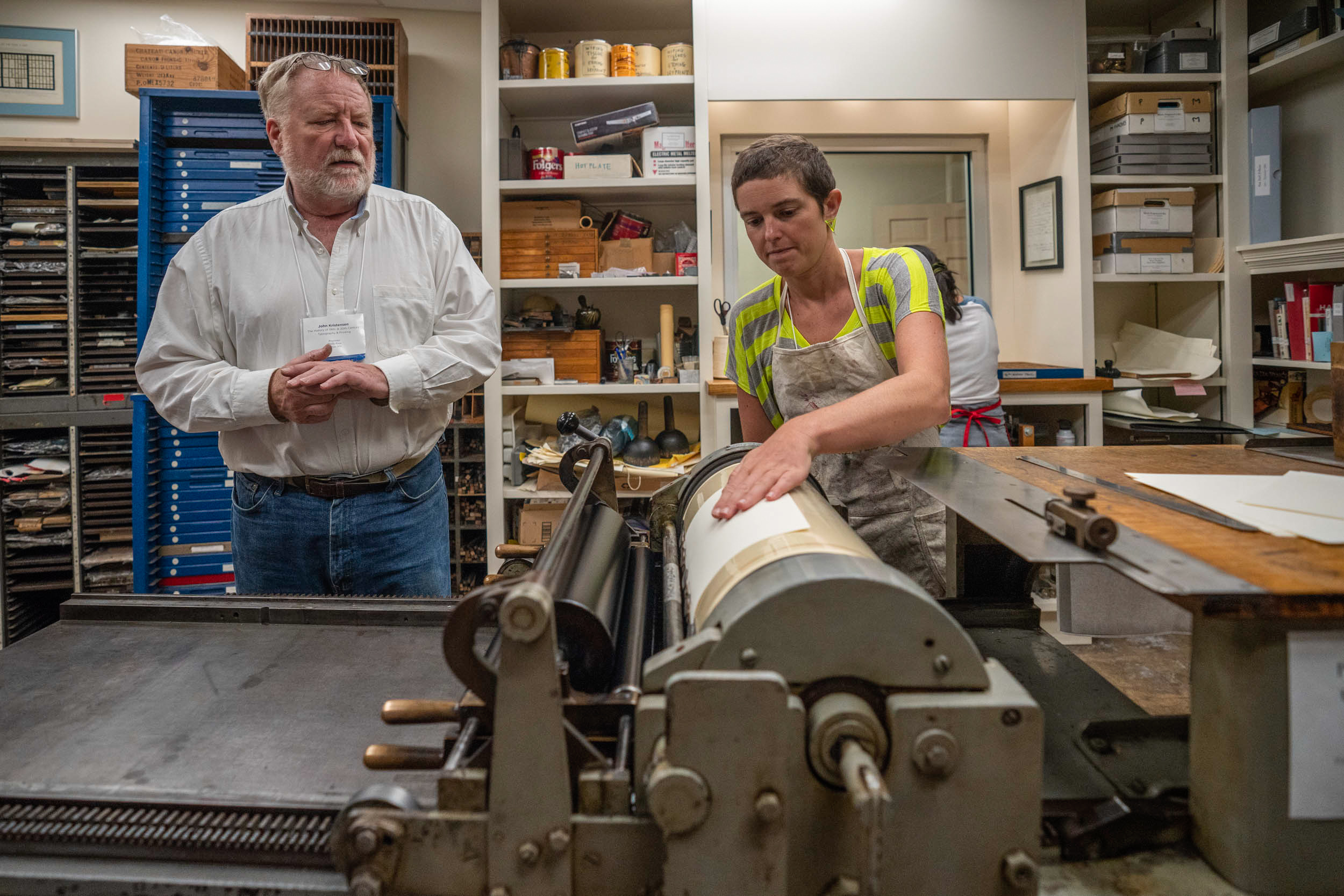 Instructor John Kristensen watches as student Meghan Forbes works the Vandercook proof press.
Instructor John Kristensen watches as student Meghan Forbes works the Vandercook proof press.
The Vandercook press came out in the early 20th century, a major advance in technology with its geared, rigid-bed cylinder. This machine is arguably the press of choice for fine press printers and book artists today.
In the printing lab for the course, each student was assigned a paragraph of text and a typeface. They then had to set the individual pieces of type into words and lines.
The course description says it “examines the inextricable bond between the technological and cultural contexts of typography and printing: the evolution of ideas about the graphic expression of thought and language; the revolution of ideas about printing as an art; and the very concept, as we now understand it, of graphic design.”
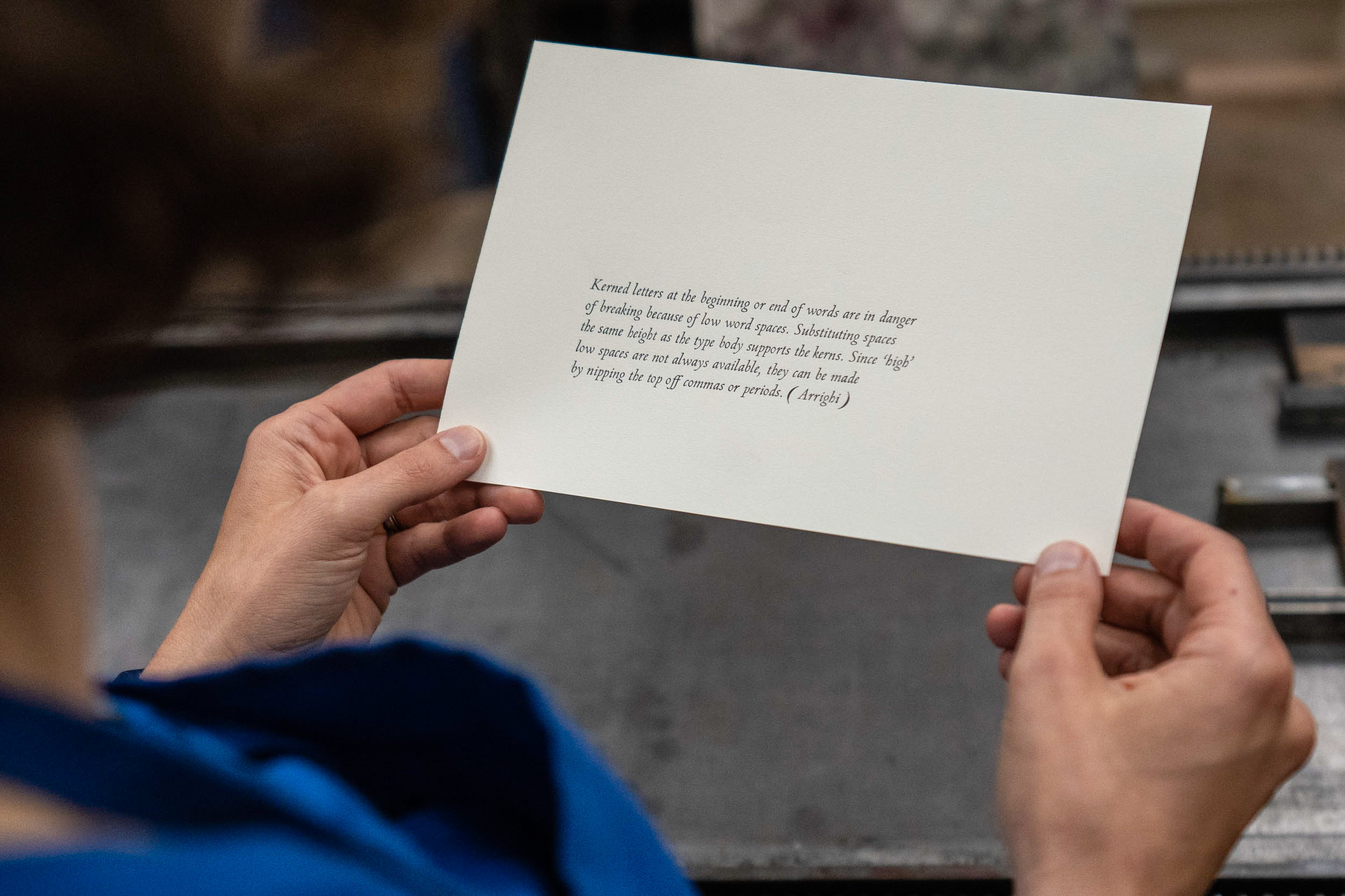 Students in a Rare Book School course practiced setting the type for different paragraphs about printing.
Students in a Rare Book School course practiced setting the type for different paragraphs about printing.
As an exercise in the practical side of printing and typographical design, the students worked on creating a printed broadside, with each printing a different paragraph about printing. The poster compiled “pointers for compositors,” another name for the person who arranges movable type and images for printing.
Rare Book School’s founder, Terry Belanger, brought the school to UVA in 1992 and, among other sources of support, received a MacArthur Fellowship “genius grant” in 2005. The school has a separate nonprofit status from the University. It has become a model for bibliographical education in the U.S. and English-speaking world.
Its current director, Michael F. Suarez, took over in 2009. Suarez, a Jesuit priest, is a University Professor with a position in the English department and also is honorary curator of the Albert and Shirley Small Special Collections Library.
For information on the Rare Book School’s schedule and fellowships, click here.
Anne E. Bromley
University News Associate
Office of University Communications
Original Publication: UVA Today
You are using an old version of Internet Explorer. Our site is developed with the latest technology, which is not supported by older browsers
We recommend that you use Google Chrome for accessing our (or any) website. It is a FREE and modern web-browser which supports the latest web technologies offering you a cleaner and more secure browsing experience.